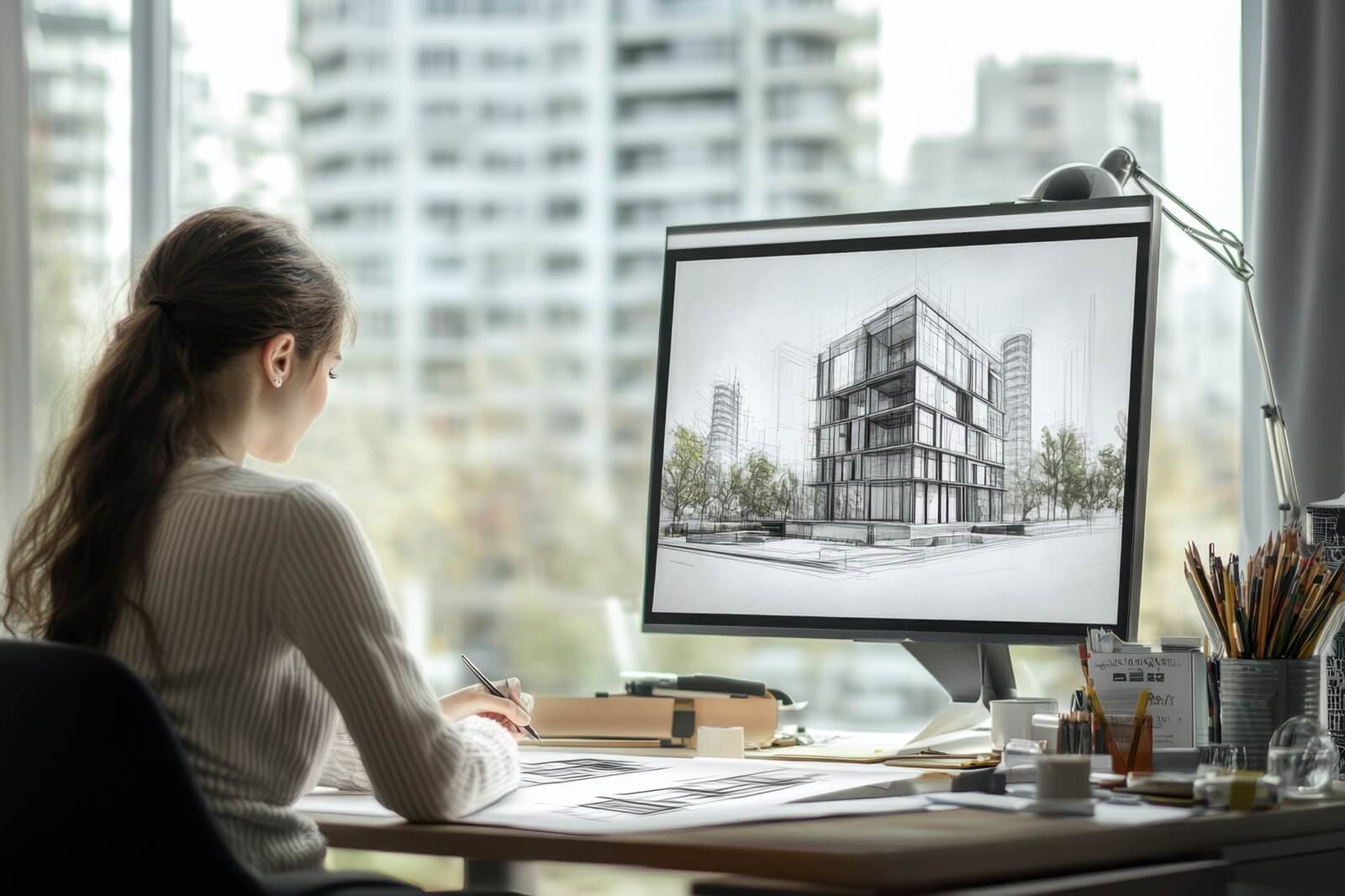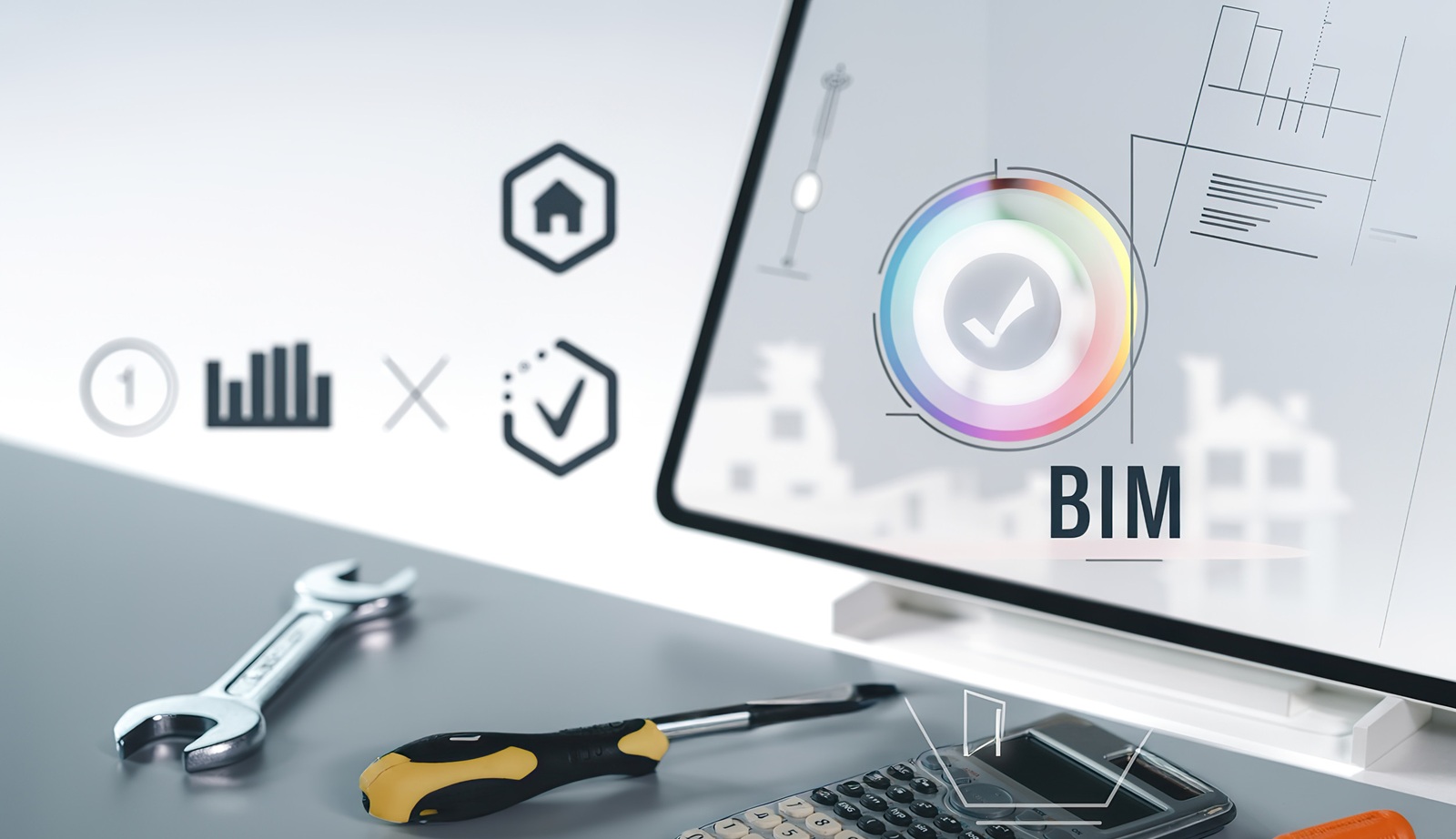In the ever-evolving Architecture, Engineering, and Construction (AEC) landscape, precision and collaboration define success. For years, Building Information Modeling (BIM) has been the foundation of digital transformation — connecting design, engineering, and construction through a unified 3D data model. Yet, as projects grow in complexity and scale, traditional BIM systems struggle to keep pace with modern demands: fragmented data, manual coordination, and slow error detection continue to limit efficiency.
Enter Artificial Intelligence (AI) — not as a futuristic add-on, but as the next logical evolution of BIM. When fused together, AI in BIM transforms static coordination tools into intelligent ecosystems capable of learning, predicting, and optimizing across every project phase. The result? Faster coordination, automated clash detection, smarter cost estimation, and continuous performance improvement.
At Stealth Technology Group, we bring this transformation to life through our cloud-AI hybrid infrastructure, designed specifically for high-performance BIM environments. Stealth’s systems enhance synchronization, automate validation, and provide adaptive intelligence that evolves with every model iteration — redefining how design and construction teams collaborate, predict outcomes, and deliver value.

1. The New Era of Intelligent BIM
BIM once revolutionized how projects were visualized. Today, AI revolutionizes how they are managed. The traditional workflow of design, validate, and build is giving way to a continuous feedback loop — one powered by intelligent algorithms that interpret context, anticipate conflicts, and streamline coordination.
AI in construction modeling turns data into foresight. It processes terabytes of model information to reveal correlations invisible to human teams — like predicting structural interference risks or identifying materials prone to future maintenance costs. Instead of reacting to problems, firms now prevent them.
According to recent industry reports, integrating AI into BIM can reduce project coordination time by up to 25% and overall rework by 15–20%, driving measurable ROI across every stage of delivery. AI doesn’t replace human expertise; it amplifies it — allowing architects and engineers to focus on creative design and strategic problem-solving, while machines handle the pattern recognition, prediction, and precision.
This fusion of automation and intelligence defines the future of the built environment. BIM is no longer a digital twin — it’s a digital brain, continuously learning from every project iteration.
2. Predictive Coordination and AI-Driven Collaboration
Coordination has always been at the heart of BIM — aligning architecture, MEP, and structural design into one coherent model. But even the best teams face challenges in maintaining alignment across disciplines, especially under tight schedules. Traditional coordination relies on manual checks, coordination meetings, and time-consuming model reviews.
AI in BIM changes that paradigm. Machine learning algorithms analyze design dependencies, automatically detecting potential conflicts and predicting where coordination errors are likely to occur. For example, if a structural beam historically interferes with MEP ductwork in similar projects, AI can flag the issue before it’s modeled.
Industry data shows that AI-enhanced coordination can cut clash review time by a quarter and reduce coordination-related RFIs by 30%. Platforms such as Autodesk BIM 360 and Trimble Connect now integrate AI-driven workflows that learn from past projects — forecasting errors and automating issue resolution in real time.
Beyond coordination, AI extends collaboration across geographies. Using cloud-based predictive analytics, design teams can work simultaneously from multiple locations with synchronized updates. The result is a continuous, predictive workflow — one where data flows freely, issues are addressed early, and every stakeholder operates on a single source of truth.
AI doesn’t just coordinate teams — it unites them through shared intelligence.
3. Reinventing Clash Detection: Precision at Machine Speed
Clash detection remains one of BIM’s most critical yet time-intensive processes. In traditional systems, detecting hard and soft clashes often requires manual analysis, extensive reporting, and repeated iterations. Each delay increases the risk of rework, budget overruns, and schedule disruptions.
AI revolutionizes this process by introducing predictive clash detection — a continuous, automated layer of model validation that operates in real time. Advanced algorithms such as gradient-boosted machine learning models evaluate model geometry, cross-discipline dependencies, and historical clash patterns to predict and prevent future issues.
For example, in a large-scale infrastructure project like the UK’s HS2 Railway, AI-integrated BIM systems used predictive modeling to identify thousands of potential conflicts before construction began, saving millions in potential rework. Similarly, tools like Solibri and Revizto now combine AI with rule-based automation to validate models against building codes while detecting spatial and clearance clashes automatically.
AI-driven clash detection doesn’t just improve accuracy — it accelerates decision-making. Teams can prioritize clashes by severity, assign automated corrective suggestions, and eliminate false positives through self-learning. What once took days of review can now be resolved in minutes — with precision that continuously improves as the system learns.

4. Smarter Cost Estimation Through Predictive Analytics
In cost estimation, precision isn’t optional — it’s the difference between profitability and loss. Traditional 5D BIM tools provide robust frameworks for cost modeling, yet they depend on static assumptions that rarely account for real-world variability in materials, logistics, or market volatility.
AI introduces a new era of predictive cost intelligence. By integrating with BIM datasets, AI algorithms analyze material quantities, labor patterns, and supplier data to generate accurate cost forecasts — dynamically adjusting as design models evolve.
For instance, AI can simulate thousands of budget scenarios factoring in steel price volatility, delivery delays, or regional labor trends. During the HS2 and Crossrail projects, predictive AI cost modeling helped identify potential overruns early, achieving accuracy levels exceeding 90% and preventing millions in unplanned expenses.
AI construction modeling also enables continuous risk monitoring. Systems like Autodesk Construction Cloud use machine learning to detect budget drift and alert teams before it escalates. Meanwhile, AI-enhanced BIM automation tools like Procore integrate real-time procurement and financial data, creating a live connection between the design model and fiscal performance.
By converting static data into predictive insight, AI transforms cost estimation from a one-time projection into a continuous, intelligent process that evolves alongside the project.
5. The Stealth Cloud-AI Hybrid Model: Data, Design, and Decision Intelligence
As BIM models grow richer and datasets larger, performance and security become mission-critical. This is where Stealth Technology Group sets the new benchmark.
Through its cloud-AI hybrid model, Stealth delivers an adaptive infrastructure that integrates compute orchestration, secure data synchronization, and predictive analytics into one cohesive system. It bridges the gap between on-premise performance and cloud scalability, ensuring firms never have to compromise between speed and control.
Here’s what makes the Stealth approach transformative:
- Intelligent Synchronization: AI continuously validates and merges updates across disciplines, preventing version conflicts and ensuring every team works from a verified single source of truth.
- Predictive Analytics: Embedded algorithms forecast system loads, data traffic, and project bottlenecks before they occur — optimizing both performance and uptime.
- Security by Design: Stealth’s AI-driven behavioral monitoring detects anomalies in real time, guarding against unauthorized access or data corruption.
In one case, a global engineering firm reduced BIM coordination time by 40% after deploying Stealth’s hybrid infrastructure — not through more manpower, but through automated intelligence that scaled effortlessly with project demand.
With Stealth, BIM environments become self-optimizing ecosystems — where data drives precision, not complexity.
6. The Tools Shaping the Future of BIM Automation
The AI-BIM ecosystem continues to expand, driven by powerful new tools that make design and construction workflows more intelligent, automated, and integrated. While many platforms now embed AI functions, several stand out for pushing the frontier of BIM automation tools:
- Autodesk Generative Design: Uses AI to explore design alternatives optimized for cost, performance, and sustainability.
- OpenSpace: Employs computer vision and machine learning to track site progress using 360° imagery.
- Veras: Automates resource allocation and equipment management for large-scale construction.
- Hypar: Accelerates model-to-BIM conversion, reducing manual work by up to 80%.
These tools extend the impact of AI in BIM from the design studio to the construction site, creating a continuous intelligence loop that improves quality, efficiency, and sustainability.
The takeaway is clear: while BIM was once about representation, AI makes it about optimization — where every iteration, material, and process is driven by data.
7. The Road Ahead: Digital Twins, IoT, and Autonomous Project Intelligence
AI’s integration into BIM is only the beginning. The next frontier lies in connecting digital models with live, real-world data through digital twins — dynamic replicas of physical assets that evolve continuously during construction and operation.
When combined with IoT sensors, drones, and real-time telemetry, digital twins powered by AI can monitor building performance, predict maintenance needs, and optimize energy consumption. AI construction modeling can simulate environmental conditions or occupancy patterns to forecast performance degradation before it occurs.
According to McKinsey’s 2025 AEC Outlook, firms leveraging AI-driven BIM and digital twin integration can reduce lifecycle costs by up to 30% while increasing asset longevity and operational efficiency.
For forward-thinking firms, the path is clear: AI is not merely transforming workflows — it’s redefining how the built world thinks, learns, and adapts.

Summary
AI in BIM marks a decisive shift from modeling to intelligence. It bridges the gap between creativity and computation, enabling AEC firms to design, coordinate, and construct with unparalleled precision and foresight.
With AI-powered coordination, automated clash detection, and predictive cost modeling, BIM evolves into a self-learning ecosystem that minimizes risk, reduces waste, and amplifies efficiency. Projects become more predictable, collaboration becomes seamless, and performance becomes measurable.
At Stealth Technology Group, we make that transformation possible. Our cloud-AI hybrid infrastructure empowers firms to synchronize data, automate validation, and achieve continuous insight — ensuring that every model isn’t just built to standard, but built to think.




